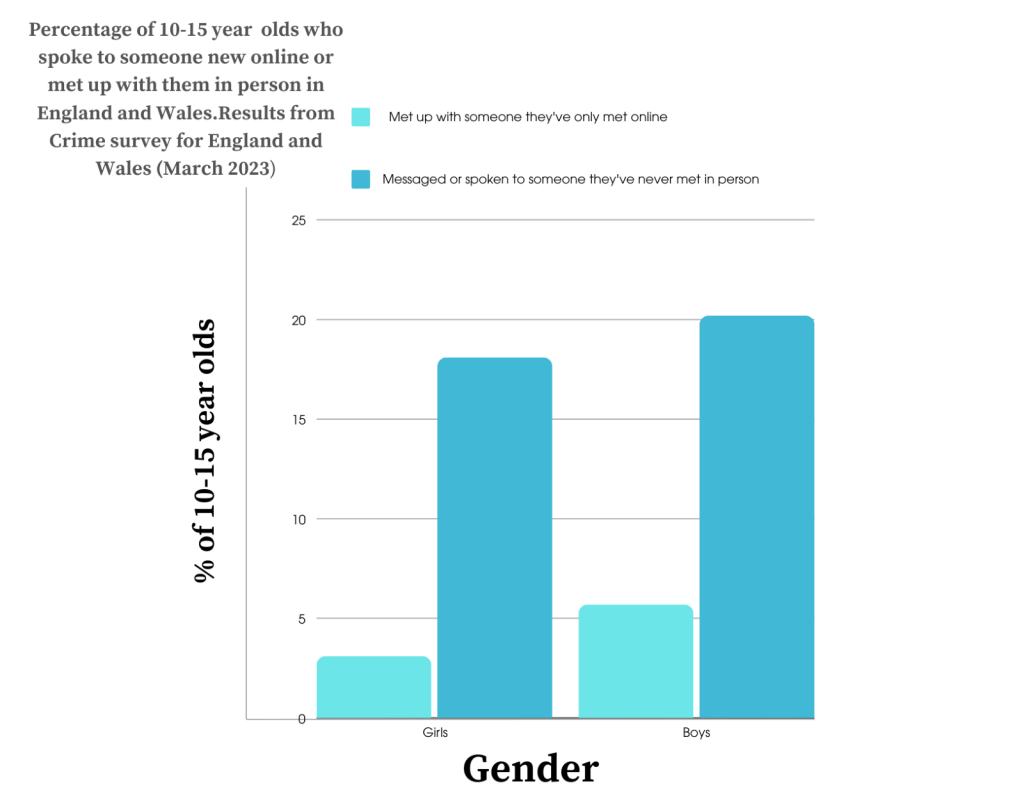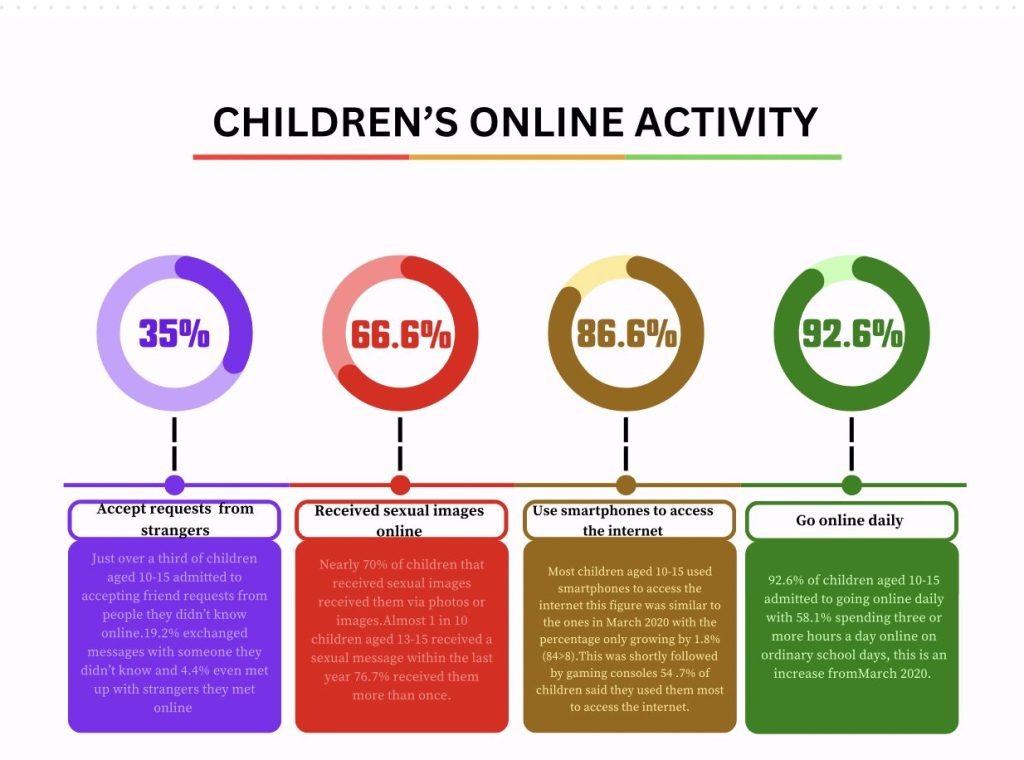More than a third of children have admitted to accepting friend requests from strangers.
The Crime Survey for England and Wales revealed 35% of children aged 10-15-years-old accept friend requests from someone they don’t know.
This year schools have been given guidance from the government on reducing the use of phones during school time because they can cause disruption, a loss of focus in lessons, and an increase in bullying.
However, a school leaders’ union claims the most obsessive use of mobile phones takes place outside of school.
When the Crime Survey for England and Wales was conducted in March 2023 it revealed that most children were going online every day (92.6%).
Many of them were spending three or more hours doing this on an ordinary school day.
When asked about his children’s online activity, father-of-two James Parsons said: “We don’t just let them have endless amounts of time online.
“We don’t want them to be online robots.
“They probably end up spending an hour or two a day online. I’d say a couple of hours, not too much more than that.”

The number of young children using social media is increasing every day and apps like TikTok, Instagram and Snapchat may seem harmless, but there are many risks.
Children are in danger of being exposed to inappropriate content, cyber bullying and cyber criminals.
The results of the Crime Survey for England and Wales showed that 35% of children knowingly accepted requests from strangers.
Almost 20% admitted to speaking to or exchanging messages with someone online who they had never actually met in person before, 4.4% of these children met up with these strangers.
Parsons, whose children are nine and 13, said: “The ultimate worry is going and meeting someone, being taken in by a persona and deciding behind our backs to go and meet them in person. And it’s someone malevolent.”
It’s becoming increasingly hard for parents to keep track of everything happening in their children’s cyber lives.
It has become normal for them to receive phones from as young as 10.
86.6% of children are accessing the internet using smartphones, this is followed up by gaming consoles.

With the rapid growth of technology there is a wider pool of avenues in which children can communicate and potentially be greeted with danger online.
Parsons said: “If they’re really set on doing it, they probably could find a way to do it.”
He also gave advice on how he thinks children should be educated about the dangers of the internet.
He said: “Drive this message home about the fact you just don’t know who this person is.
“Use stuff that makes the news for the wrong reasons as examples. What if it’s someone who has ulterior motives and is very violent.”
There are ways parents can monitor their children’s online activity.
Parsons uses these safety measures to protect his children.
He said: “There are no devices in the room at bedtime. We don’t let it go completely unchecked. Don’t blindly trust your kids. Do police it.”
Data sourced here.
Featured image by Kirill Averianov from Pixabay





